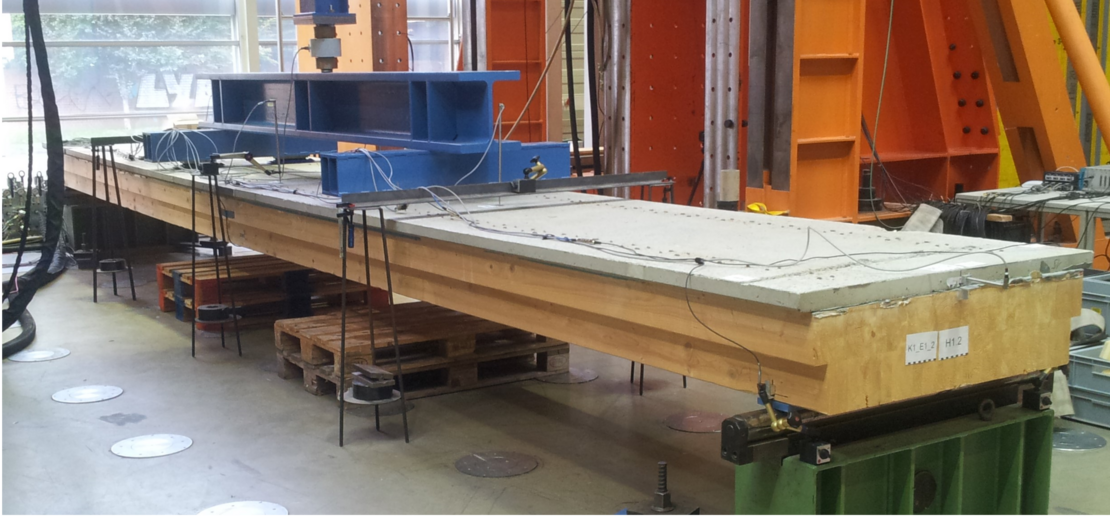This page contains automatically translated content.
Bonded composite components made of wood and concrete for bridge construction
 Image: University of Kassel
Image: University of KasselWood-concrete composite structures are used in building and bridge construction as a resource-saving building material. Current manufacturing methods use metallic connections such as screws or bolts, which means that in-situ concrete must be used in every case. Researchers from the Department of Building Conservation and Timber Construction at the University of Kassel have dispensed with this. Instead, they were able to prove that it is possible to use highly filled epoxy resin adhesives or so-called polymer mortar to produce large-scale bonded structural components several meters long that are also suitable for use as heavy-duty bridges. "The adhesive technology offers many advantages over conventional fastener methods in terms of load-bearing capacity and bending stiffness. What is also particularly advantageous about this type of construction is the use of prefabricated reinforced concrete elements. These are easy to handle, do not have to cure on the construction site, and are thus often cheaper overall than conventional construction methods," describes Jens Frohnmüller, a research associate in the department.
The tests also showed that the novel polymer mortar is easier to handle than conventional epoxy resin adhesives due to its toughness when applied to the wooden beams and can also bridge unevenness on the surfaces of the materials better. In addition, the adhesive is applied in strips rather than over a wide area. In this way, the bonding surface can be adapted to the stresses that occur.
In load tests, the composite beams with a span of 8m withstood a load of up to 446 kilonewtons. "Converted, that's about 45 tons, so a bridge made of this bonded wood-concrete composite can withstand a fully loaded heavy-duty truck - or about 30 VW Golfs at a time," explains Jens Fronmüller. The adhesive bond always remained fully intact until the final failure of the girder. Either a tensile failure of the wood or a compressive failure of the concrete was responsible for the final failure.
In addition, the researchers were able to validate two calculation models. These can be used to predict all the important properties of the composite beams, in particular the concrete load-bearing capacity and the deformation behavior. "The results of the models agree very well with the results from the experiments. They are a reliable tool that we can give to engineers who want to work with this method. Components bonded in this way are well suited to bridge construction, for example in forests, where they often have to withstand heavy vehicle loads," sums up Prof. Werner Seim, head of the department.
Publication: https://link.springer.com/article/10.1617/s11527-021-01766-y
Contact:
Prof. Dr.-Ing. Werner Seim
Head of Department Structural Maintenance and Timber Construction
Phone: +49 561 804-2625
E-mail: wseim[at]uni-kassel[dot]de
Jens Frohnmüller, M. Eng.
Research Associate, Department of Building Preservation and Timber Construction
Phone: +49 561 804-2685
E-Mail: frohnmueller[at]uni-kassel[dot]de